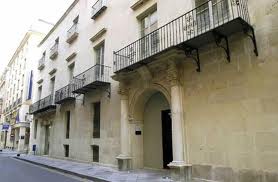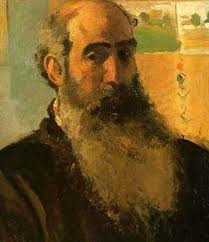Spanish Museums: Alicante: Gravina Museum of Fine Arts
If you ever visit Alicante, you shoul go and see the Gravina Museum of Fine Arts, which is known as the 'Museo de Bellas Artes Gravina' in the Spanish language or 'MUBAG', is a Spanish museum which is dedicated to the painting and sculpture of the Spanish region of Alicante, along with some works from other artistic disciplines. The pieces on display range from around the 16th Century to the first half of the 20th Century.
History

The idea for creating an art collection for the local council of Alicante originated in the year of 1838 with the creation of the 'Comisión Provincial de Monumentos Históricos y Artísticos' (Provincial Commission of Historical and Artistic Monuments). The aim of this commission was to create libraries and museums of the works that they recovered from condemned and demolished churches and convents in the region of Alicante. Unfortunately today, many of the works that were obtained in the first part of the 19th Century have been lost. However, many important pieces have survived into the collection thanks to the work of this organization, such as the 16th Century painting 'Calvario de Cristo' by Rodrigo de Osona.
The commission continued working in this manner into the second half of the 19th Century, when it merged with the collection of artwork belonging to the Alicante school of Drawing and Painting. The joint collection became an even greater representation of the artistic talent in Alicante, including works by Suarez Ordoñez, José Aparicio and Vicente Rodes. One of the most important works in the collection of this time was the portrait of the Spanish King Fernando VII, painted by Vincente López.
The year of 1932 was another important year in the history of the collection, as it was the year in which the headquarters for the museum, in the Palacio Provincial, was inaugurated. The museum continued to collect pieces of artwork in the 1950s ad 60s, when many works were acquired during the National and Provincial Competitions. Also, in 1955, the local government decided to expand the collection by incorporating the collection of works by Juan de Rojas.
In the 1970s, the collection grew even bigger. One of the additions was a collection of works donated to the collection by Don Rafael Beltrán de la Llave in 1970. A year later, the museum invested in the collection of sculptures, paintings and ceramics that was owned by Don Ramón Quiles. Up until today, this Spanish museum has continued to acquire more and more artworks. They even began opening their search for great artwork to include photography as well.
The Building
The Gravina Museum of Fine Arts is housed in the 'Palacio Provincial' (Provincial Palace) of Alicante, which is also called El Palacio Gravina, and has been there since the 18th Century. The palace had been built on the ruins of another building which had been destroyed during the War of Succession. The facade of the palace is built from stone taken from the nearby mountain range, Sierra de San Julián. The building also contains a magnificent staircase made from stone. The building had to undergo a significant transformation to become the famous Spanish art gallery it is today. It was previously owned by the Count of Lumiares

In the last few decades, many restorations and improvements have been undertaken at the Palacio Gravina. Many annexes to the museum have been added in order to create more space for displaying artwork. The basement and ground floor have been modified to be more modern, so as to provide an appropriate setting for the pieces of the collection dating from the modern and contemporary periods.
The Collection
The purpose of the Gravina Museum of Fine Arts is therefore to showcase some of the best artistic talent from the region of Alicante. As a result, the majority of the pieces in the museum's collection are pieces completed by local artists. There are around five hundred pieces of artwork in the collection today.
Some of the most famous pieces in the collection include the portrait of Fernando VII by Vincente López, and a sculpture by Francisco Salzillo. Furthermore, their collection of paintings by local artists from the 19th Century is extensive and is a good representation of the trends from that period including landscape paintings, historical paintings and portraits.
